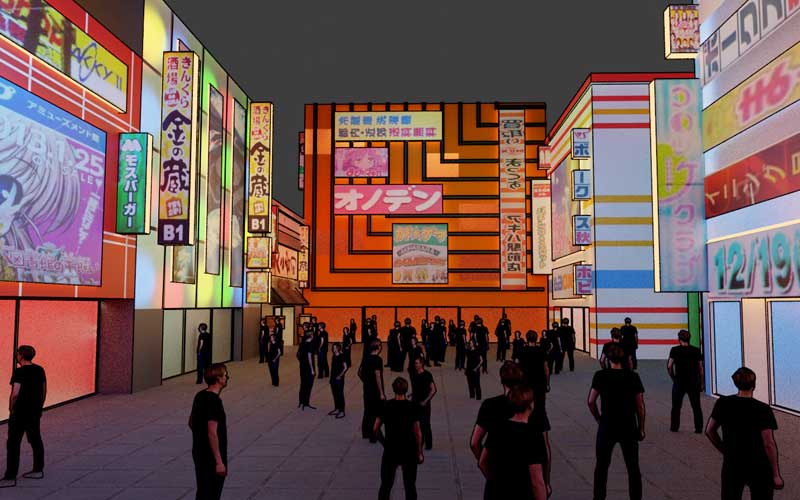As our technology has developed over time, humanity has pushed the very limits of communication and collaboration to its extremes.
At some point, the telephone was a concept unlikely to ever have been imagined, let alone a small version you can carry around in your pocket.
Yet all the same, here we are today, defying the very imaginations of people hundreds of years ago.
Humanity has certainly come a long way since the times of our ancient communication forms smoke signals and carrier pigeons.
Our technological developments of telephones, telegraphs, the internet, telepathy technology, and virtual reality have paved the way to revolutionize how we communicate together as a whole.
The invention of social media and video calling has changed the way we do business and friendships, even replacing the SMS and phone calls of the 2000s. Indeed, society as we know it, has globalized through the shared use of these technologies, making everyday life simpler and easier than it has ever been.
Naturally, as our technology developments continue to expand into ever more unknown regions, humanity is seeking out even more immersive experiences. While our communication and collaboration are at new heights, we can take it even further.
That’s where the metaverse comes in. Imagine an amalgamation of all these technologies joined together to create an immersive, life-like communication experience. So, what is the metaverse?
It can include virtual reality systems, in-person meetings across a network, games, conferences, concerts, and field trips worldwide. Meta, headed by Mark Zuckerberg, describes it simply as “a set of virtual spaces where you can create and explore with other people who aren’t in the same physical space as you.” It’s the next step in the digital evolution of humanity, a way to take our communication and collaboration to the next level.
As this happens, several ideas are emerging that will shape and mold the metaverse into the technology it will be.
Money and Metaverse
Considering that the metaverse exists in a wholly virtual space, the virtual currency must be commonplace. In such a context, cryptocurrencies and digital assets will have the best opportunities to utilize the market over and above other forms.
Therefore, with an economy that is unique and independent of any other, these cryptocurrencies and digital assets will become the main method of completing transactions across the metaverse. New currencies are continuously being developed and introduced in the real world and the digital across the blockchain, alongside the already well-known Bitcoin and Ethereum.
 For those even seeking to open accounts on platforms such as Sandbox or Decentraland, which host live metaverses, the user must first set up a cryptocurrency wallet, which can be utilized to hold all of your digital currencies and assets.
For those even seeking to open accounts on platforms such as Sandbox or Decentraland, which host live metaverses, the user must first set up a cryptocurrency wallet, which can be utilized to hold all of your digital currencies and assets.
One of the more popular wallets is MetaMask, which can be set up by downloading and installing the application on your device or as a Google Chrome extension. This wallet allows the user to easily exchange whatever kind of fiat currency you use in your everyday life into the cryptocurrency you need by using your debit or credit cards.
Commerce and Metaverse
As you would expect, the future of commerce will never be the same.
Throughout the Covid-19 pandemic, online shopping and deliveries have become everyday shopping for millions of people.
The metaverse development will only accelerate this trend since customers will no longer need to frequent physical stores to try different types of products before they buy them.
Both virtual reality and augmented reality technologies would allow customers to seek out and try out different brands from the comfort of their own homes. These same technologies will allow for a more interactive experience for consumers, who will be able to try pieces and products not currently in-store or in stock since everything is held virtually.
 In our world today, you do not need to look far to find ways in which e-commerce has sought to embrace and involve itself in the endless possibilities of a metaverse and the technology that comes with it.
In our world today, you do not need to look far to find ways in which e-commerce has sought to embrace and involve itself in the endless possibilities of a metaverse and the technology that comes with it.
While virtual reality headsets are still out of reach for most consumers, many brands and companies are attempting to break into the new digital market. Their goal is to create a much more seamless and engaging experience for their customers and remove the friction from a long and arduous shopping trip. Customer loyalty would no doubt be boosted because of this.
Many brands have been striving to create such experiences through e-commerce, brick-and-mortar retail, and social media to enhance and ensure better customer experiences. This is a lot easier said than done since trying to help every individual customer’s shopping journey is a huge and impossible undertaking.
Many retailers have struggled to coordinate such experiences effectively and don’t have the time or resources to apply the advanced techniques required.
Therefore, some brands have sought to create something different, something new.
They have sought to create integrated and dynamic stores online which bring together the best facets of online and offline shopping.
Virtual shopping is moving commerce away from the in-store, static product catalogs and developing virtual, real-time 3D experiences in a store. These users can “walk” around, enjoy the displays powered by augmented and virtual reality technology and experience the combination of the immersive characteristics of offline shopping with the simplicity and ease of shopping online.
For example, Nike has premiered NIKE LAND on the Roblox gaming platform, which exists as an immersive and customizable 3D space. Like all spaces on Roblox, the Nike community can participate in online games and create them using their own personal NIKE LAND toolkit.
 As they play and win in-game medals and items, they can redeem these on Nike items for their player avatars online. It doesn’t exist solely as an online experience, where consumers can activate and use a unique Snapchat lens at the Nike House of Innovation in New York City.
As they play and win in-game medals and items, they can redeem these on Nike items for their player avatars online. It doesn’t exist solely as an online experience, where consumers can activate and use a unique Snapchat lens at the Nike House of Innovation in New York City.
This lens superimposes NIKE LAND on the store environment, allowing an extra layer of immersion and building stronger emotional connections with their consumers.
By projecting the customer’s personalized piece of the Nike brand into their offline shopping experiences, Nike builds more rapport with its target audience.
Real Estate and Metaverse
Eventually, the Metaverse will improve or even replace our real-life functions and day-to-day activities within the virtual space with all these concepts in play. Things that users would do every day of their lives, from going to school to going to work to going out and having fun with friends, can be done within the metaverse instead by people within the comfort of their own homes.
Real estate concepts are already beginning to transform from the physical realm to the digital world.

One of the first companies to become involved in digital real estate is Metaverse Group, which operates a virtual world known as Decentraland.
The parent company of the Metaverse Group, Token.com, recently announced that a “116 parcel estate in the heart of the Fashion Street district within Decentraland” sold for approximately $2.5 million, a new record set on the online world.
The owner of this virtual land on Fashion Street could put in a nice profit from renting out the virtual land as a landlord should luxury brands such as Louis Vuitton want to set up shop in a virtual world.
Luxury brands in the metaverse future may indeed have storefronts in these virtual worlds, where users can browse their wares as they walk through their virtual stores as if they were perusing a real one.
But between buggy software, a small user base, and a system that allows consumers to buy and sell slurs online with a complicated system seemingly incapable of stopping them, perhaps the platform mentioned above may not be the one to develop it, at least at this point.
Conclusion
These three emerging pillars of money, e-commerce, and real estate that will eventually be leveraged by the virtual world are still developing in their rights.
As the technology surrounding the metaverse grows, these concepts will be further improved and built upon, growing even more helpful to humanity’s endeavors in the virtual space.
All of these concepts, the technology behind them, and the incredible minds of the world’s best and brightest will put us on a huge step toward human digital evolution.
The metaverse and all of the things that will come with it are changing how we utilize currency, commerce, and real estate forever.


